Introduction
Everyone loves the idea of affiliate marketing. But almost no one tells you what it really takes to succeed.
You’ve seen the screenshots. The “$10K in 30 days” headlines. The influencers flaunting passive income while sipping espresso on some tropical beach.
But here’s what most don’t say out loud: Affiliate marketing can work, but only if you treat it like a real business.
Random links? Won’t cut it. Copy-paste promos? Easy to ignore. Promoting things you barely understand? That kills trust fast.
So what does work in 2025? Creating real value. Building genuine trust.
Recommending products people actually want, in a way that feels helpful, not hypey.
This isn’t a get-rich-quick scheme. This is the blueprint for turning attention into income in a way that’s sustainable, ethical, and honest.
If you’re tired of chasing trends and ready to build something real, keep reading.
Because affiliate marketing still works, just not the way most people are doing it.
Disclaimer: I am an independent Affiliate. The opinions expressed here are my own and are not official statements. If you follow a link and make a purchase, I may earn a commission.
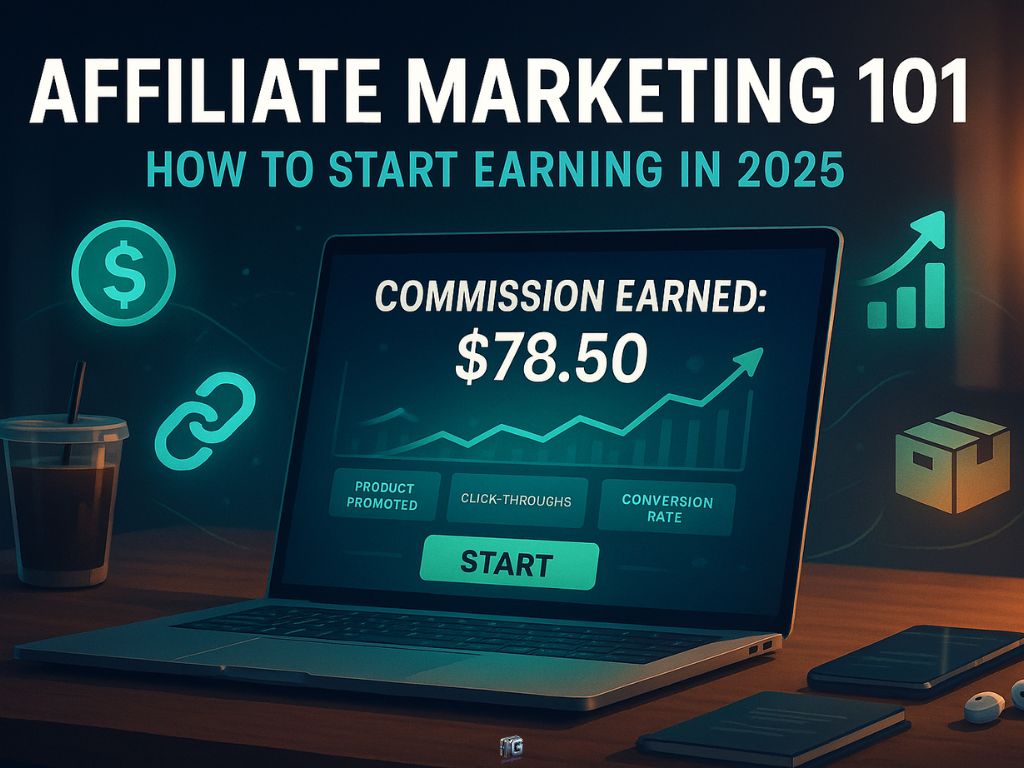
Key Takeaways
- Affiliate marketing is performance-based. You only earn when people take action through your link. No guesswork. No fluff.
- You don’t need to build a product, manage inventory, or handle customer support. Just connect the right people to the right offers.
- It’s beginner-friendly and low-cost to launch. Free tools and platforms in 2025 make it more accessible than ever.
- But don’t confuse easy access with easy money. Strategy beats spam. Random promotion doesn’t convert.
- Success starts with choosing a niche, creating content that solves real problems, and building real trust.
- There are multiple ways to earn: pay-per-sale, pay-per-click, pay-per-lead. But none of it works without delivering value first.
- Want consistent commissions? Then be consistent in how you teach, how you help, and what you recommend.
Build Your Audience First (Or You’ll Never Earn a Dime)
No audience means no clicks, no trust, and no commissions.
That’s the part most beginners skip. They think affiliate marketing starts with a link. It doesn’t. It starts with people, real humans who listen when you speak, trust what you say, and take action when you recommend.
Before you earn a single dollar, you need attention. But not just any attention. The kind that sticks. The kind that makes someone think, “I want more of what this person shares.”
This is your foundation. If you get it wrong, nothing else will matter.
Here’s how to build it from scratch.
Find Your Niche (Your Zone of Influence)
A niche isn’t a cute branding exercise. It’s your arena. The space where you can win, stand out, and stay relevant.
If you try to be everything to everyone, you’ll be invisible. The riches are in the specific. The more focused your topic, the easier it becomes to attract the right people and repel the wrong ones.
A strong niche has three things:
- It’s specific enough to feel personal. “Fitness” is vague. “Bodyweight workouts for new moms with no time” hits a nerve.
- It has active demand. People are already spending money in this space. You’re not convincing them to care. They already do.
- It feels like home to you. If you wouldn’t talk about it every week for a year, it’s not your niche. You’ll quit when results are slow.
Many beginners chase what looks profitable instead of what feels natural. That’s why most burn out within weeks. Real success comes when your content feels like a conversation, not a chore.
Passion alone won’t pay you. But passion, paired with market demand, becomes a magnet for income and longevity.
Pick Your Primary Platforms (Not All of Them)
Trying to show up on every platform is a trap. It looks ambitious, but it’s just distraction in disguise.
When you’re starting out, your time is your most limited resource. Spreading yourself thin across five channels guarantees slow progress and watered-down content. You don’t need to be everywhere. You need to be effective somewhere.
Start by identifying where your target audience already spends their time. Then choose one platform to build content and one to collect leads.
These are your high-leverage options:
- Blog: Ideal for long-form content that ranks in search engines and brings in traffic for months or years after publishing.
- YouTube: Video builds trust fast. When people see and hear you, they feel like they know you. That trust drives conversions.
- Instagram or TikTok: Best for highly visual niches like beauty, travel, fitness, or lifestyle. Quick to go viral, but harder to convert long-term without pairing with email.
- Email List: Your most important asset. You own it. No algorithm controls who sees your message. Build this early and protect it.
If you start with a blog or YouTube channel and pair it with a simple email list, you’re already ahead of 90 percent of new affiliates.
Commit to mastering one platform before adding more. Most people quit not because affiliate marketing is hard, but because they spread themselves too thin to get traction.
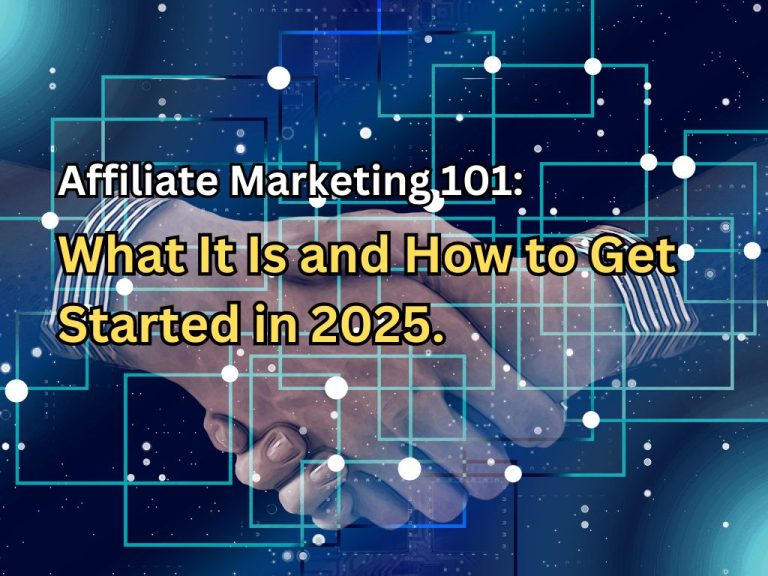
How Affiliate Marketing Actually Works
At its core, affiliate marketing is simple. But don’t confuse simple with easy.
Here’s how it works: you partner with a company, promote their product using a special tracking link, and earn a commission when someone buys through that link.
That’s the surface-level version. But here’s what matters under the hood.
Your affiliate link acts like a digital handshake. It tells the company, “This buyer came from me.” If that lead converts, you get paid. Depending on the program, commissions can range from a few dollars to hundreds per sale.
But your link alone won’t make sales. What matters is how you present it.
Here’s the real process that drives income:
- You join an affiliate program that aligns with your niche.
- You receive your unique tracking link.
- You create content that provides actual value, content that educates, entertains, or solves a real problem.
- You place your link naturally within that content, not as a hard sell but as a helpful solution.
- You drive traffic to that content using search, social, email, or a combination.
- People click, take action, and you earn commissions.
Affiliate marketing is not about pushing products. It’s about positioning the right product as the next step your audience already wants to take.
Get that right, and the link becomes invisible. It feels like part of the experience, not a distraction.
Why Affiliate Marketing Is Perfect for Beginners in 2025
Most online business models feel intimidating to beginners. Affiliate marketing doesn’t. It offers a low-stress, low-risk path to learning real skills and earning real income.
Here’s why it still stands out in 2025:
You don’t need to create a product. There’s no inventory to manage, no shipping logistics, and no customer support to babysit. Your job is to connect people with solutions that already exist.
You can start with almost no budget. Free blogging platforms, email tools, and video hosting make it possible to launch with little more than time and effort.
You control the pace. Whether you have a full-time job or just a few hours a week, affiliate marketing lets you work around your schedule and grow at your own speed.
You don’t need advanced skills. If you can write clearly, speak with purpose, or create content that helps, you already have what it takes to begin.
The ecosystem is exploding. From e-commerce and software to online education and personal finance, affiliate opportunities exist in every industry imaginable. And more companies are launching affiliate programs every month.
Affiliate marketing doesn’t just make money. It teaches you how to think like a marketer. How to understand audiences. How to test, tweak, and grow.
It’s not a shortcut to riches. But for beginners who want a real path, one that scales, teaches, and pays, it’s still one of the smartest ways to start.
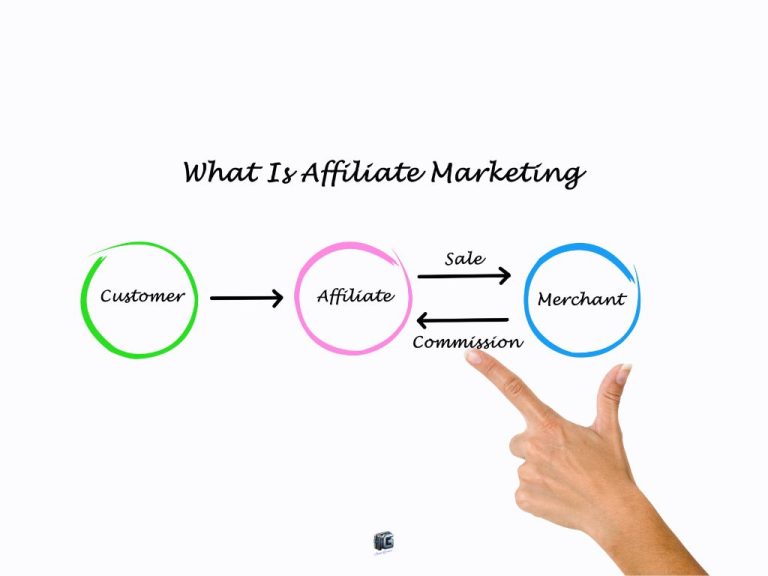
How to Choose Affiliate Programs That Actually Pay
Affiliate marketing doesn’t just reward effort. It rewards precision.
You can create amazing content, drive tons of traffic, and still earn pennies if you’re promoting weak offers. That’s the trap most beginners fall into.
So how do you choose affiliate programs that actually pay and keep paying?
Here’s how to spot the winners before you waste your time.
Start with the Commission Structure
You’re in business now. That means every offer you promote has to earn its keep.
Some programs pay a flat amount per sale. Others give you a percentage. The real magic is recurring commissions. That’s when you make one referral, and get paid every month the customer sticks around.
This is how smart affiliates stack income over time. They promote tools and subscriptions people use long term, like email platforms, software, or membership programs.
What to look for:
- 20 to 50 percent commissions on digital products or courses
- $50 or more per sale for high-ticket offers
- Monthly payouts for tools or services people keep using
Low commissions are fine for practice, but they won’t build a serious business.
Check the Cookie Duration
A cookie is what tracks your referral after someone clicks your link.
Some programs only track for 24 hours. Others give you 30, 60, or even 90 days.
Here’s why that matters. If someone clicks today but buys next week, a short cookie means you get nothing. A longer one means you still earn.
You worked for the click. Don’t let a weak cookie steal your payout.
Study the Sales Page Like a Customer
Before you promote anything, walk through the product’s sales page like you’re the one about to buy.
Ask yourself:
- Does this feel trustworthy?
- Is the message clear?
- Would I pull out my card after reading this?
If the page feels sketchy or confusing, your audience won’t convert. It doesn’t matter how good your content is.
Your job is to lead them to the offer. The page has to close the sale.
Only promote products with clean design, strong messaging, and a clear benefit to the buyer.
Protect Your Reputation
Affiliate marketing is word-of-mouth at scale. If you promote a bad product, your audience remembers.
Before you link to anything, research the brand. Read real customer reviews. Test their support team. Find out how refunds are handled. Look at what happens after the sale.
If the company treats buyers poorly, they will blame you, not the brand.
This isn’t about playing it safe. It’s about protecting what you’re building.
Only Promote What You Understand or Use
You don’t need to buy everything you recommend. But you do need to know what it does, how it works, and who it helps.
If you’ve used it yourself, even better. That gives you confidence, and your audience will feel it.
If you haven’t, then dig deep. Watch demos. Read comparisons. Talk to other users. Know it like you own it.
Would you recommend this to a close friend? If not, don’t recommend it to your audience.
Where to Find Great Affiliate Programs
You don’t have to search for hours. Start here:
- Affiliate networks: ShareASale, CJ Affiliate, Impact, ClickBank
- Software tools: Email platforms, design apps, landing page builders
- Course creators: Many offer private affiliate programs
- Brand websites: Scroll to the footer and look for “Affiliate” or “Partner Program”
You don’t need a dozen options. Two or three strong, relevant offers will outperform a list of weak ones every time.
Final Word on Picking Affiliate Offers
A great offer makes everything easier. More clicks. More trust. More sales.
That’s why your content is only half the game. The product has to pull its weight too.
Don’t just chase commissions.
- Choose offers with staying power.
- Choose brands you believe in.
- Choose tools that deliver real results.
Affiliate marketing isn’t about promoting everything. It’s about promoting what actually helps.
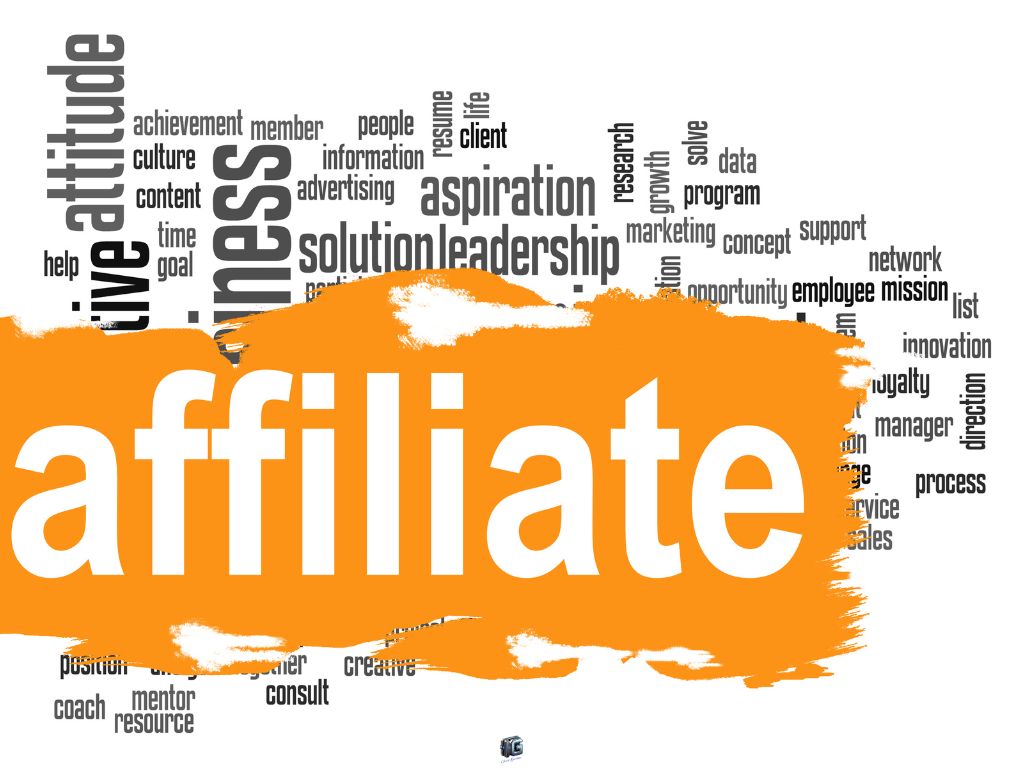
Content That Converts: What to Create, How to Structure It, and Where to Place Your Links
Here’s the truth no one tells beginners: affiliate marketing isn’t just about what you promote. It’s about how you present it.
Content is what turns cold clicks into hot commissions. Done right, it builds trust, positions you as the go-to guide, and makes people want to follow your lead.
So what kind of content actually converts in 2025?
Let’s break it down.
Start with the Right Intent
Every piece of content should answer one question: what’s the outcome your audience wants?
Don’t just talk about products. Show how they solve real problems. The best content doesn’t feel like a pitch. It feels like a solution.
Think about what your audience is already searching for. What are they struggling with? What decision are they trying to make? What result are they chasing?
That’s where your content begins.
Content Types That Drive Affiliate Sales
There’s no one-size-fits-all formula, but these formats work consistently:
Tutorials and How-To Guides
Walk people through solving a problem step by step. Naturally recommend the tools you use.
Product Reviews
Share honest pros and cons. Break down your experience. Include a “who this is for” section so people can see if it fits them.
Comparisons and Versus Posts
These attract buyers who are close to a decision. Think: “ConvertKit vs. Mailchimp” or “Best Budget Camera for YouTube.”
Case Studies
Show your audience how a product helped you or someone else get a specific result. Add screenshots, steps, or proof if possible.
Resource Roundups
List tools or solutions around a theme, like “Top 5 Email Tools for Beginners” or “The Only Gear You Need to Start a Podcast.”
Each of these can be written, recorded, or spoken. Choose the format that fits your style and the platform you’re focused on.
Structure That Builds Trust and Clicks
Attention is fragile. If your content feels messy, overwhelming, or pushy, people bounce.
So make their experience easy to follow.
Here’s a structure that works:
- Hook: Capture attention with a bold claim or question
- Problem: Speak to the reader’s pain or desire
- Solution: Introduce the tool, method, or idea that helped
- Proof: Share your real experience, results, or examples
- Call to Action: Tell them what to do next, with zero pressure
Lead with value. Make your content helpful even if they never click. If it helps them today, they’ll come back tomorrow.
Where to Place Your Affiliate Links
This is where most beginners slip up. They either hide their links or blast them everywhere like a firehose.
The goal is trust. Place your links where they feel natural and helpful.
Try this:
- Within your value: Mention the product as you teach how it solves a real problem
- In a comparison table: Highlight features, pricing, and use cases, with direct links
- At the end: Add a “What I Recommend” or “Here’s What I Use” section
- Using CTA buttons: Use benefit-focused calls like “Try It Free” or “See My Favorite Tool”
- On your tools or resources page: Create a hub for all your recommended products
Track your links using tools like Pretty Links or Bitly so you know what’s working.
The Bottom Line
You don’t need a giant audience to earn commissions. You need content that moves people. From stuck to curious. From curious to confident. From confident to clicking.
Solve their problem. Share what worked. Give them the next step.
Keep it honest. Keep it useful. Keep it real.
Do that consistently, and the conversions take care of themselves.
Check out our Full Affiliate Marketing Platforms Guide.

Driving Traffic to Your Affiliate Content: How to Get Eyes (and Clicks) on Everything You Create
Creating content is step one. But if no one sees it, it doesn’t matter how good it is.
Traffic is the fuel. No clicks means no conversions. That’s why affiliate marketers who win focus just as hard on distribution as they do on creation.
You don’t need a giant audience. You need consistent eyeballs from the right people.
Here’s how to make that happen.
Nail One Traffic Channel Before You Add More
Trying to do everything at once guarantees slow growth. Pick one traffic strategy and dominate it before you move to the next.
Most beginners should start with one of these:
- Search (SEO) – Create blog posts or YouTube videos that rank when people search for solutions
- Social Media – Use TikTok, Instagram, or YouTube Shorts to attract attention fast
- Email Marketing – Turn casual visitors into loyal readers who come back again and again
- Pinterest – Great for evergreen content in niches like health, wellness, personal finance, DIY
You don’t need to be everywhere. You need to be unmissable somewhere.
Use SEO to Get Free, Ongoing Traffic
SEO takes longer to kick in, but it’s the most powerful long-term traffic source you can build.
Start with basic keyword research. What are people typing into Google or YouTube when they need help in your niche?
Create content around those terms. Solve that problem better than anyone else.
Tools to help:
- Google Suggest
- AnswerThePublic
- Ubersuggest
- Keywords Everywhere
- SEMrush or Ahrefs if you’re ready to invest
Then optimize your title, description, and content so it’s easy for search engines to understand what you’re offering.
One well-optimized blog post can bring in clicks for years.
Repurpose Content Across Platforms
Don’t let your best content die on one platform.
Turn a YouTube video into a blog post. Take key points from a blog and turn them into Instagram carousels. Record a short-form video that summarizes a long tutorial.
Every time you repurpose, you expand your reach without starting from scratch.
This multiplies your traffic while keeping your message consistent.
Build an Email List Early
Most visitors won’t buy the first time. That’s why an email list is your secret weapon.
It gives you a way to follow up, provide more value, and recommend products over time. The people on your list are the most likely to click, trust, and convert.
Use a simple opt-in offer:
- A quick checklist
- A mini tutorial
- A starter guide
Then send consistent emails that teach, help, and recommend.
Own your audience. Don’t let algorithms decide if people see your content.
Show Up Consistently
Traffic isn’t magic. It’s math and momentum.
If you post once and disappear, no one will remember you. But if you publish consistently, your content stacks, your reach grows, and your name becomes familiar.
That’s when trust kicks in.
And trust is what turns traffic into income.
The Bottom Line
Traffic is your amplifier. It takes the value you create and puts it in front of the people who need it most.
You don’t need viral hits. You need steady growth. One view becomes ten. Ten becomes a hundred. A hundred becomes your first commission.
So focus on one channel. Publish with purpose. Learn what works. Then double down.
Get eyes on your content, and the clicks will follow.
Affiliate Funnels: Why You Should Build a Simple Funnel (Even as a Beginner)
Most beginners make one fatal mistake.
They send traffic straight to an affiliate link, cross their fingers, and hope for a sale.
That’s not a strategy. That’s guessing.
If you want to turn clicks into consistent income, you need a funnel. Not a complicated, tech-heavy beast. Just a simple, intentional path that warms people up and leads them to action.
Here’s how it works and why it matters.
What Is an Affiliate Funnel?
An affiliate funnel is a guided path that turns a stranger into a buyer.
It usually starts with a lead magnet. Something quick, valuable, and easy to say yes to. When someone signs up, they join your email list. At that point, you’re no longer relying on luck or algorithms. You own the relationship.
From there, you follow up with content that teaches, helps, and recommends. You guide them step by step. Not by pushing, but by leading.
That’s the funnel. One simple entry point. One focused journey. One natural path to conversion.
Why Funnels Increase Affiliate Income
Funnels give you control. They let you:
- Capture traffic you would otherwise lose
- Follow up automatically with emails that deliver more value
- Present affiliate products as solutions, not pitches
- Build long-term trust instead of relying on one click
Without a funnel, your window to earn is five seconds. With one, it stretches into days, weeks, even months.
What a Beginner Funnel Looks Like
Step 1: Lead Magnet Page
Offer something valuable in exchange for an email address. Think checklists, templates, cheat sheets, or starter guides.
Step 2: Thank You Page with an Affiliate Offer
After someone opts in, send them to a page that introduces a product that helps them take the next step.
Step 3: Email Follow-Up Sequence
Send a few short emails that share more tips, your personal story, and links to helpful affiliate products. Make it feel like a conversation, not a sales campaign.
You don’t need anything fancy. Just a clear path from interest to action.
Tools That Make It Easy
You don’t need a big budget or a team to build your first funnel. Start with beginner-friendly tools like:
- Systeme.io – A free all-in-one platform for landing pages, emails, and funnels
- ConvertKit – Email marketing with automation, built for creators
- MailerLite or Mailchimp – Great free options for simple lists and sequences
- Canva – Create polished lead magnets, opt-in covers, and bonus PDFs without any design skills
Start where you are. Use what you have. Upgrade as you grow.
The Bottom Line
Funnels don’t just increase your earnings. They multiply your impact.
They let you keep helping even after someone clicks away. They give you space to earn trust before you ask for action. And they make affiliate marketing feel more personal and less transactional.
A funnel turns strangers into subscribers. It turns content into connection. And connection is what creates conversions that last.
Tools to Make Affiliate Marketing Easier
You don’t need a massive tech stack to win at affiliate marketing. But the right tools can save time, cut through confusion, and help you grow with a lot less stress.
Think of these tools as quiet teammates. They don’t replace your work. They amplify it.
Here’s what you actually need, stripped down and beginner-friendly.
Tools for Content Creation
Canva: Use it to design blog graphics, YouTube thumbnails, lead magnets, and social media content. No design background needed. Drag, drop, publish.
Grammarly: Trust dies when your writing is sloppy. Grammarly catches typos, grammar mistakes, and awkward phrases before they hit the internet.
ChatGPT or AI Writing Assistants: Great for brainstorming outlines, rewriting rough sections, or sparking fresh ideas. Use it to enhance your voice, not replace it.
Tools for Websites and Landing Pages
WordPress: The go-to platform for affiliate blogs. Use a lightweight theme like Astra or Kadence and install SEO tools like Rank Math or Yoast.
Systeme.io: All-in-one tool for funnels, email, and simple websites. Great if you want to keep things lean without juggling five platforms.
Carrd: Perfect for one-page sites or lead capture pages. Clean, minimal, and easy to launch fast.
Tools for Email Marketing
ConvertKit: Built for creators. Set up automated sequences, track performance, and tag subscribers based on behavior.
MailerLite: Great for starting from zero. Their free plan is generous, and the platform is intuitive for beginners.
Mailchimp: A classic choice. Good for simple email broadcasts, though it’s a little clunky compared to newer tools.
Email is your safety net. Platforms change. Algorithms crash. But if you own your list, you own your audience.
Tools for Tracking and Optimization
Pretty Links (WordPress plugin): Turn long, messy affiliate URLs into clean, branded links. Also tracks clicks so you know what’s working.
Bitly: A free link shortener with basic tracking if you’re not using WordPress.
Google Analytics: See where your traffic is coming from and what content drives conversions. The more you measure, the smarter you market.
Tools for Organization and Workflow
Notion or Trello: Plan your content calendar. Organize affiliate programs. Map out email sequences. Keep everything in one place.
Google Drive: Use it to store checklists, lead magnets, scripts, or swipe files. Share with partners or keep your assets backed up.
Start Small. Build As You Go.
You don’t need all these tools to begin. In fact, using too many too early will slow you down.
Start with three:
- One place to publish content
- One platform to capture emails
- One tool to track affiliate links
Master those. Then scale.
Because tools don’t grow your income. Consistent action does. The system is what matters, and every tool should support it, not distract from it.

Affiliate Marketing Mistakes to Avoid
(So You Don’t Waste Time or Burn Trust)
Affiliate marketing looks simple. But the wrong move at the wrong time can cost you clicks, credibility, and months of progress.
Most beginners fail not because they don’t try, but because they keep stepping into the same traps.
Avoid these, and you’ll move faster than most people ever do.
1. Being Too Pushy
Your job isn’t to sell. Your job is to help.
If every post, video, or email sounds like a pitch, people disappear. Affiliate links should feel like recommendations, not pressure.
Solve problems. Share results. Make the product feel like the next logical step.
When you lead with value, trust does the heavy lifting.
2. Skipping Disclosures
Not disclosing affiliate links isn’t just risky. It’s a trust killer.
Your audience doesn’t expect you to work for free. They expect you to be real.
All it takes is a simple line like: “This post contains affiliate links. I may earn a commission at no extra cost to you.”
Be transparent. Protect your reputation. Stay compliant.
3. Promoting Unrelated Products
If it doesn’t match your niche, don’t touch it.
Chasing high commissions on irrelevant products sends the wrong signal. It tells your audience you’ll recommend anything for a quick buck.
Stick to products that solve real problems for the people you serve. Relevance builds authority. Randomness kills it.
4. Ignoring Content Quality
Low-effort content doesn’t convert. It gets ignored.
If your blog post looks rushed, your video rambles, or your email feels half-baked, people won’t engage and they definitely won’t click.
Take the time to create content that teaches, helps, and earns attention. That’s the currency affiliate marketing runs on.
5. Expecting Overnight Success
Affiliate marketing is not a vending machine. You don’t publish today and cash out tomorrow.
It takes time to build trust. Time to grow traffic. Time to find your rhythm.
But the payoff is worth it.
Stay consistent. Stay focused. Stay patient. The first commissions always take the longest. After that, things compound fast.
Final Word on Avoiding Mistakes
You don’t have to be perfect. You just have to be committed.
Every successful affiliate started exactly where you are. The difference is, they didn’t quit when things were quiet.
Avoid these mistakes, stay in motion, and play the long game. Because the longer you stay in, the more you stack skills, trust, and income.
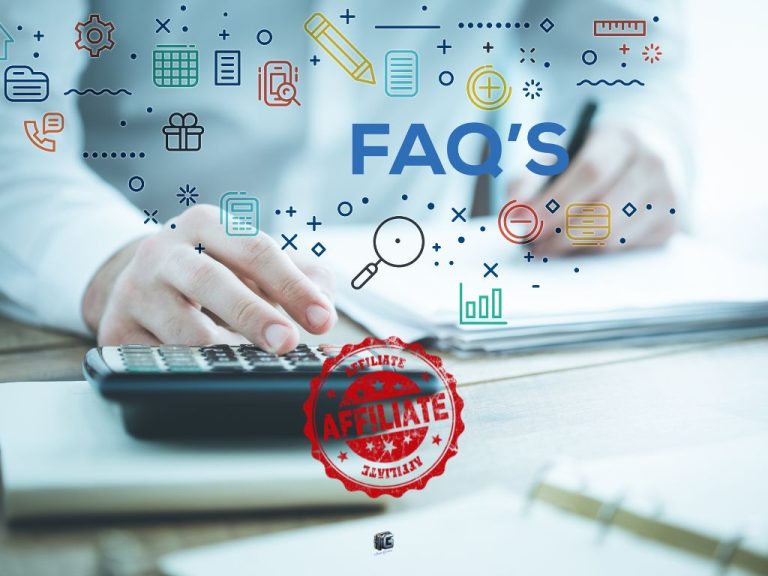
Affiliate Marketing FAQs
Do I need a website to start affiliate marketing?
No. You can start by sharing affiliate links on platforms like YouTube, Instagram, TikTok, or through an email list. A website gives you more control and credibility, but it’s not required on day one.
How much money can I make with affiliate marketing?
It depends on your niche, traffic, consistency, and how well you match offers to your audience. Some beginners earn a few dollars a month. Others build full-time income or more. The ones who treat it like a business see business-level results.
Is affiliate marketing legal?
Yes. Affiliate marketing is 100% legal when done properly. Just make sure to disclose your affiliate links clearly, follow FTC guidelines, and promote products ethically.
What if I don’t have any experience?
No one starts with experience. You learn by doing. Pick one niche, one platform, one product. Create value, stay consistent, and grow your skills over time. Experience is earned, not required.
Can I do affiliate marketing for free?
Yes. You can start with free tools, free platforms, and free traffic sources. Social media, email, and even blogging on WordPress.com are all valid ways to begin without spending money.
How long does it take to make my first commission?
Some people earn within their first 30 to 90 days. Others take longer. If you stay consistent and keep improving, results will come. Most quit too early. The ones who stick with it start seeing momentum.
Can I promote more than one affiliate program?
Yes, but keep it relevant. Start with one or two core products that make sense for your audience. As your content grows, you can layer in additional offers that add value without confusing your message.
What’s the best niche for affiliate marketing?
The best niche is the one where passion meets profit. Choose something you care about that also has proven demand. Fitness, finance, tech, personal development, and online tools are all strong options.

Conclusion: Your First Click Is the Starting Line
You’ve got the blueprint. You’ve got the tools. Now comes the part most people never do. Action.
Affiliate marketing works. Not because it’s trendy, but because it rewards people who solve real problems and keep showing up.
You don’t need to be famous. You don’t need to be perfect. You just need to start.
Pick a niche that matters to you. Choose one product that solves a specific problem. Publish content that helps someone today. Build your list. Build trust. Build your skills one piece at a time.
It won’t be instant. But it will be worth it.
Most people read guides like this and keep scrolling. A few take what they’ve learned and build something real.
The difference is commitment.
So ask yourself right now: Am I ready to stop consuming and start creating?
Because nothing happens until you move.
What to Do Next
- Pick one niche
- Choose one affiliate product
- Build one piece of helpful content
- Share it with the world
- Collect your first click
- Keep going
That’s it. Simple. Focused. Real.
Your first affiliate commission won’t change your life. But the person you become by earning it will.
Ready to go beyond the basics? Learn how beginners are getting started with high ticket affiliate marketing here.


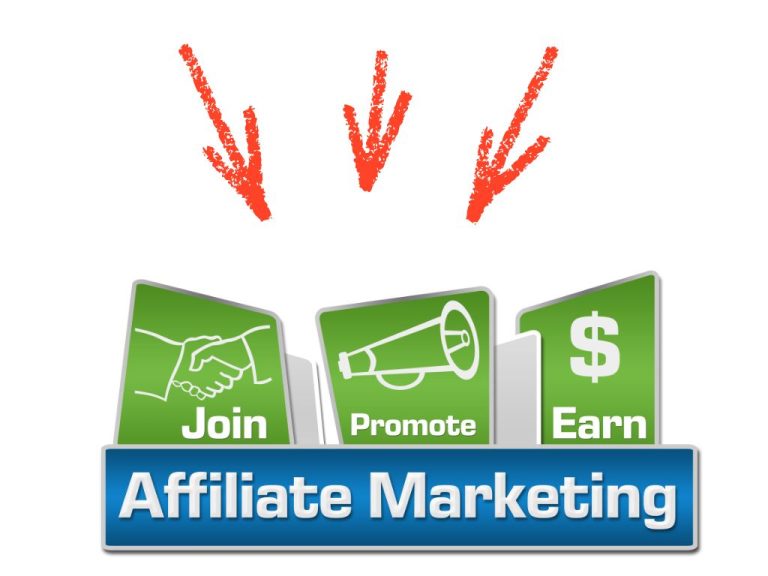
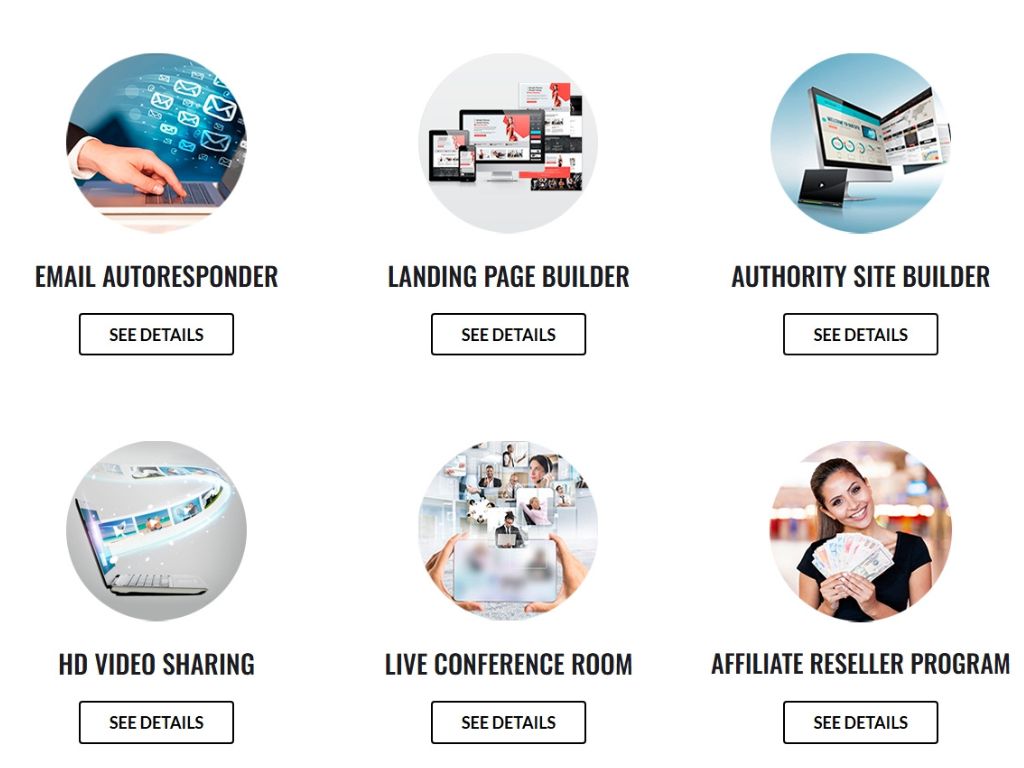

11 Comments
Best Affiliate Marketing Platforms for Beginners: Where to Start and Succeed - Ismel Guerrero. · February 6, 2025 at 11:09 pm
[…] you’re completely new to affiliate marketing, start with our Beginner’s Guide to Affiliate Marketing to understand how the business model […]
Best Niches for Affiliate Marketing: Profitable & High-Paying Niches - Ismel Guerrero. · February 7, 2025 at 10:03 pm
[…] you are new to affiliate marketing, check out our Affiliate Marketing 101 to get started with the […]
Pinterest Affiliate Marketing: An In-Depth Guide to Success. - Ismel Guerrero. · February 8, 2025 at 3:39 pm
[…] Next, check out our full affiliate marketing guide here. […]
Ad Copy: How to Write Compelling Ads That Convert - Ismel Guerrero. · February 22, 2025 at 9:38 am
[…] Next, you might want to read our affiliate marketing guide. […]
Affiliate Marketing for Beginners: Start Your Journey With The Ultimate Guide - Ismel Guerrero. · March 11, 2025 at 1:06 pm
[…] Next, check out our Affiliate Marketing 101 Guide. […]
High Ticket Affiliate Marketing for Beginners: A Step-by-Step Guide - Ismel Guerrero. · March 28, 2025 at 11:30 am
[…] If you’re not yet familiar with the basics, this guide explains affiliate marketing step by step. […]
AI Affiliate Marketing: The Ultimate Guide in 2025 - Ismel Guerrero. · March 31, 2025 at 8:29 pm
[…] To learn more read our affiliate marketing full guide. […]
Crypto Affiliate Programs: Your Path to Earning Passive Income in Cryptocurrency. - Ismel Guerrero. · April 11, 2025 at 7:21 pm
[…] new to this space, it’s helpful to first understand how affiliate marketing works in general—Affiliate Marketing 101 is a great place to […]
OLSP System Review: Real Opportunity or Total Waste - Ismel Guerrero. · April 11, 2025 at 11:10 pm
[…] to affiliate marketing? Check out our complete Affiliate Marketing guide to learn the basics and start your journey the right […]
The Beginner's Roadmap to Affiliate Marketing Commissions - Ismel Guerrero. · April 13, 2025 at 1:03 am
[…] If you want to dive even deeper into the basics, check out our full Affiliate Marketing Guide. […]
Faceless Marketing: The Strategy Taking Over the Internet - Ismel Guerrero. · May 13, 2025 at 5:57 pm
[…] Read our Affiliate Marketing Guide and our High-Ticket Affiliate Marketing […]